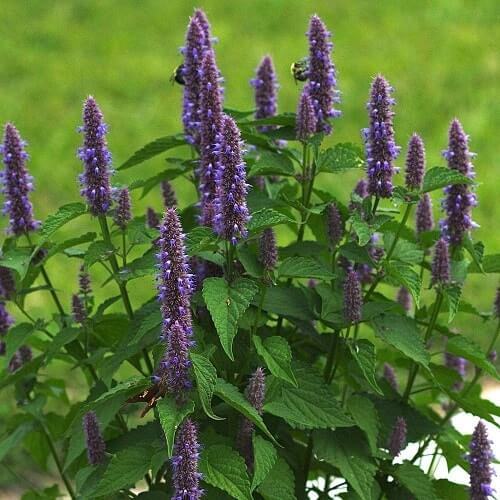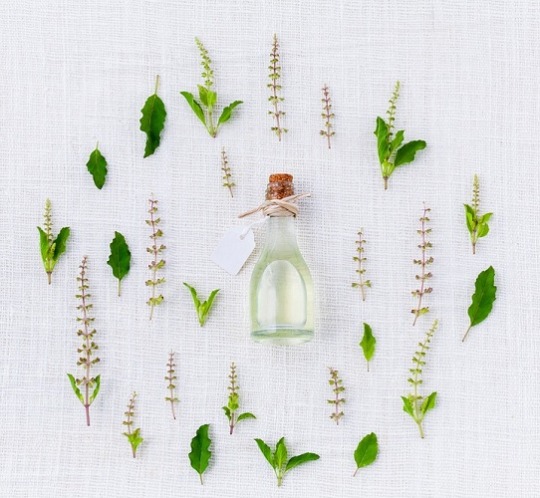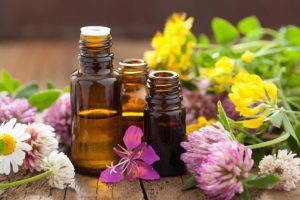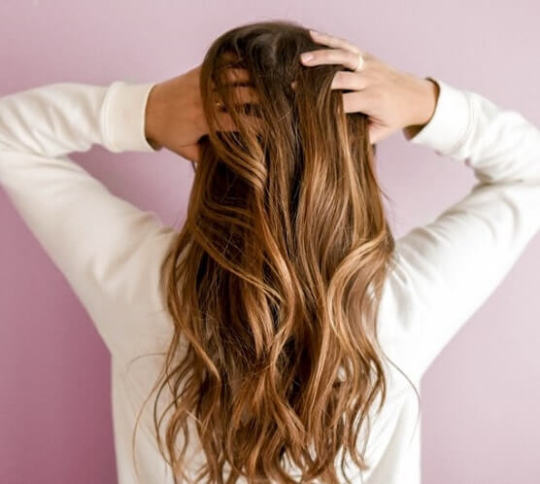#aromatherapyuses
Link
#Anti-aging#anxietyrelief#Aromatherapy#immunesystem#incense#Meditation#Naturalremedies#Respiratoryhealth#skincare#stressreduction
0 notes
Text
Understanding Botany for Aromatherapy: What is a Hybrid Plant?

Understanding Botany for Aromatherapy: What is a Hybrid Plant?

Understanding Botany for Aromatherapy: What is a Hybrid Plant?
The term hybrid may conjure up an image of something that is not “real” — and in some ways, this may be true. However, with regard to plants, hybrid plants, depending upon your point of view, are just as “real” as original plants and, furthermore, when used as an essential oil, hybrid plants have the potential for therapeutic properties, too; hybrid essential oils are not the same as synthetic, or adulterated, essential oils which are chemically made, or altered, in a laboratory or process plant.
Definition of a Hybrid Plant
A hybrid plant is an interspecies plant; that is, a plant that has been crossed between two different species but within the same genus (Falsetto, 2014). There are many different hybrid plants. And you will find many hybrid plants within the world of gardening; breeders attempt to create an “ideal” plant for specific climates and to produce the “best” features of the plant. The hybrid plant will share common characteristics with both of its parent plants. Hybrids are sometimes created naturally in the wild through self-pollination, but many are usually specifically bred with human intervention.
Although essential oils were originally extracted from wild plants, today, through commercialization of the industry, many common (or endangered) plant species used for essential oil extraction, are bred specifically for that use, in order to protect the wild resources. Along the way, plants have also been specifically bred to create other species – of which, several are used in aromatherapy practice.
Describing a Hybrid Plant in Botanical Terms
Today, all plants are cataloged using a scientific plant classification system. The system, originally developed by Carolus Linneaus (1707 – 1778), records all names in Latin, in a two-part binomial name. For example, true lavender is recorded as Lavandula angustifolia (with various synonyms).
A hybrid plant will have the letter x inserted between the two parts of its binomial name; the insertion of the letter x indicates that the plant is a hybrid, or interspecies, plant.
Common Hybrid Plants in Aromatherapy
You might be surprised to learn that some of the common essential oils used in aromatherapy are actually extracted from hybrid plants. Examples of hybrid plants that produce essential oils are:
lavender (Lavandula x intermedia) – a cross between true lavender (Lavandula angustifolia) and spike lavender (Lavandula latifolia). Lavandin shares common characteristics of both of its parent plants; the essential oil is similar in use to true lavender, but has a different chemical make-up and a sharper aroma, with therapeutic properties beneficial for respiratory and muscular problems (Lawless, 1995).
Grapefruit (Citrus x paradisi) – a cross between the shaddock or pomelo (Citrus maxima) and sweet orange (Citrus sinensis). Its hybridization is not clearly documented but records indicate it was probably bred sometime in the eighteenth century.
Peppermint (Mentha x piperita) – the parents of the hybrid plant peppermint are cited by many resources as spearmint (Mentha spicata) and water mint(Mentha aquatica) but Heilmeyer writes that horse mint (Mentha longifolia) is a parent of peppermint too as it was in common use by gardeners during the time of hybridization (1696, in England) (Heilmeyer, nd). Peppermint essential oil contains some strong chemical components and one of its parent plants, spearmint, is often recommended in preference to peppermint.
Rose (Rosa x damascena) – the rose is such a common plant, with many species and hybrids, that many may not realize that the damask rose is a hybrid of musk rose (Rosa moscheta) and Gallic rose (Rosa gallica). In addition, there are several other rose species used as an essential oil, so it is important to know which species (or hybrid) you are using. Even though many rose species essential oils share similar therapeutic properties, their aroma can vary.
amzn_assoc_placement = "adunit0";
amzn_assoc_search_bar = "true";
amzn_assoc_tracking_id = "gardensnurs0b-20";
amzn_assoc_search_bar_position = "bottom";
amzn_assoc_ad_mode = "search";
amzn_assoc_ad_type = "smart";
amzn_assoc_marketplace = "amazon";
amzn_assoc_region = "US";
amzn_assoc_title = "Shop Related Products";
amzn_assoc_default_search_phrase = "Aromatherapy";
amzn_assoc_default_category = "Beauty";
amzn_assoc_linkid = "c3be52d1991620937c77fdec3f76ee57";
amzn_assoc_default_browse_node = "3760911";
Follow us: Facebook, Twitter, Instagram, Pinterest
(adsbygoogle = window.adsbygoogle || ).push({});
Read the full article
#Aromatherapy#aromatherapybasics#aromatherapycourse#aromatherapydiffuser#aromatherapyessentialoils#aromatherapyfacial#aromatherapyhealing#aromatherapymasage#AromatherapyMassage#Aromatherapyoils#aromatherapyperfume#aromatherapyrecipes#aromatherapysoaps#aromatherapytraining#aromatherapyuses#diyaromatherapy#howaromatherapyworks#howdoesaromatherapywork#hybrid#hybridplants#lavenderaromatherapy#plants#tazekaaromatherapy#whatisaromatherapy
0 notes
Link
For just $8.95 100% Pure Therapeutic Essential Oils-no fillers, additives, bases or carriers added Use: For Diffusers, Aromatherapy, Massage Spa Bath Fragrance Material:Herb,Fruit Properties:Anti bacterial, antiseptic,calming,rejuvenating,relaxing,soothing Reported Benefits: Soothing and Calming for body and mind Can relieve the symptoms of anxiety, panic, depression, tension and nervous related difficulties oning and antibacterial on the skin-great added to cream, lotions or toners. Also good for acne, boils etc. Healing and Soothing to skin-good used for burns and wounds but should not be applied to open skin Great for aiding sleep and relaxation especial when combined with Chamomile and Marjoram Used in child birth to help maintain calm and speed up the second stage of labour in a managed way Can ease the symptoms of sunburn and sunstroke Can help to reduce the itchy associate with insect bites, dry skin and eczema Uses:aromatherapy,custom massage and body oils,evaporation,diffusion,oil burners,suction,compression,perfume, blends,Spa and family care,cleaning products. Essential Oil Type: Pure Essential OilIngredient: Plant extractsCertification: GZZZUse 1: Water-soluble 100% Pure Essential OilsUse 2: For Aromatherapy,Diffusers, Massage, Spa Bath FragranceUse 3: Orange Lavender Essential Oils for AromatherapyUse 4: 10ml Natural Essential Oil Skin CareUse 5: Wrinkle Care Lift Skin Plant Essentiellenet weight: 10 ml
0 notes
Text
What is Aromatherapy and Essential Oils?

What is Aromatherapy and Essential Oils?

What is Aromatherapy and Essential Oils?
What is aromatherapy?
Aromatherapy is the use of essential oils for therapeutic purposes. Each of them has specific properties, it can be used to treat various ailments, physical as well that psychological. The small molecular size of the essential oils allows them to be easily absorbed, through the nose, mouth or skin. They penetrate quickly into the bloodstream and have immediate action on the metabolism which explains their incredible efficiency.
The application of this natural therapy is based on a strict and rigorous approach, based on serious and demonstrated scientific studies. The main goal of aromatherapy is to soothe and heal, to restore the balance of the body to harmonize the physical and the minds of individuals. Through their action, essential oils trigger and reinforce the natural process of self-healing.
This starts from the principle recognized that the smells influence us and act in a beneficial way on our unconscious and our organism. Each essential oil has its own peculiarities when it is judiciously chosen, it helps to stimulate the body's natural defenses and often acts as a preventive agent. Essential oils act as gently, they soothe and stimulate the intellect, whet the appetite and act in a beneficial way on the emotions. This results in an improved general condition and a feeling of well-being accentuated.
What is an essential oil?
Essential oil is a product derived from the distillation of one or more parts of a plant: leaves, flowers, fruits, barks, roots, seeds, resin, etc.
Essential oils can be extracted from aromatic plants by different techniques, but the two main one's Extraction processes are a steam distillation and cold expression of zests (used for citrus fruits). These two methods ensure excellent final quality and make it possible to obtain essential oils from molecules. extremely powerful aromas with exceptional therapeutic properties.
A true essential oil, which should not be confused with a synthetic molecule, a fragrance or an extract flavored vegetable, has vast medicinal properties and high olfactory qualities. Note that it is always necessary a huge amount of plants to carry out the distillation because the concentration of essential oil in the plants is always tiny. This can sometimes explain the high cost of some essential oils because it often takes several tons of vegetable matter to extract a single liter of essential oil.
Note also that, contrary to what its name suggests, the essential oil is not fat. composite only volatile aromatic molecules, it is not oily like vegetable oil. Aromatic, pure and natural, of complex chemical composition, obtained exclusively from raw material vegetable, essential oils have abundant qualities. Their many therapeutic properties and virtues olfactory, make them valuable and beneficial for health. They are widely used in areas like perfumery and aromatherapy.
Fragrance or Essential Oil?
The fragrances and essential oils share many similarities, but also several fundamental differences, that it is important to emphasize. Essential oils are pure and natural molecules. Derived from distillation, it was cut with no other product and come exclusively from plants. They are recognized and appreciated for their perfume, subtle and intense, and their medicinal virtues. They have several proven beneficial effects on the body and are greatly used in aromatherapy. Their main virtue is an increase in the feeling of well being, as much physical as psychological.
The fragrances are synthetic molecules reconstituted, they allow to enjoy the perfumes, often impossible to extract by distillation, certain fruits, herbs or flowers. They do not contain true natural essence and their contribution to aromatherapy is strictly at the olfactory level and not medicinal. They have everything likewise virtues because even if they are synthetic, the quality fragrances help to find calm and to relieve the stress. In conclusion, essential oil or a fragrance may both be suitable for diffusion. A choice and personalized, of a quality product, can indifferently be appreciated and act effectively in the environment.
Safe use of essential oils
Air diffusion remains one of the safest ways to benefit from the properties of oils essential.
Most of the unfortunate incidents associated with the use of essential oils are usually related to the bad use or lack of knowledge, such as direct application to the skin or mucous membranes. As with any substance, essential oils have potentially allergenic or toxic effects. However, all these problems are avoided when dealing with a reliable company, people well informed and products deemed safe. Risks for pregnant women, young children, the elderly or sick can be easily avoided.
Because if oral absorption or skin application is to be avoided in some In this case, the controlled and well-targeted release of essential oils chosen and deemed safe remains the safest to use. Thus, the nebulization ensures, by its advanced technique, the controlled diffusion in quantity and in quality, our products, all guaranteed reliable and without risk to health. Bad dosages and related dangers misuse are therefore eliminated and guarantee the safe use of our essential oils.
The Therapeutic Properties of Essential Oils in Diffusion
Used in diffusion, essential oils have a very wide power of action. As the body does not develop they can take advantage of their many beneficial effects on an ongoing basis. Several studies have shown that essential oils are able to attack very powerful microbes, destroying them and thus preventing their proliferation. Essential oils also fight effectively against bacterial infections than viral or parasitic. They are:
Antibacterial
Essential oils have a power of electromagnetic attraction on the molecular organisms that are found in the ambient air. Various factors, like pollution or a lot of people in one place, drastically reduce the number of negative ions in the ambient air, which then takes care of bacteria (positive ions) that can cause various infections. Diffuse essential oils fight against these bacteria since they charge in the air negative ions that neutralize the positive ions.
These results do not surprise the researcher Monique Lacroix, who studies the antibacterial properties of oils at the Institut Armand-Frappier in Laval: "We have seen that at very low concentrations, oils essential can eliminate bacteria.
The concentration of the mixture increases efficiency. Sprayed on a wall, the oil is in direct contact with the bacteria. The chances of eliminating it are therefore better. "His team has studied more than 200 essential oils rich in phenols to find the ones that are most effective against pathogenic bacteria, such as E. coli, salmonella, and staph: Thyme, oregano, clove, and cinnamon would be among the most promising.
The antibacterial effect of essential oils has also been proven in an English hospital. Researchers from the University of Manchester have highlighted the highly antibacterial effect of essential oils. An oil diffuser has been installed for 9 months in 2 rooms of a hospital. Result: a 90% decrease in bacteria in the air and a reduced number of infections were found.
Fungal
They prevent and treat fungal infections caused by microscopic fungi. (Ex: Cedar, Melissa,
Geranium, Palmarosa.)
Antiseptics
They prevent and fight infections by destroying germs and stopping their reproduction.
(Ex: Lemon, Cajeput, Lavender, Pine)
Antiviral
They stop the development of viruses, highly sensitive to its aromatic molecules and stimulate the immune system. (Ex: Tea Tree, Eucalyptus, Lavender, Rosemary, Thyme.)
Purifying
Disseminated in the atmosphere they cleanse and deodorize the air. They disinfect and prevent contagion while perfuming pleasantly. (Ex: Lime, Grapefruit, Petit Grain, Fir.)
Revitalizing
Because of their rapid penetration ability, they revitalize weak cells in the body. They act
at the level of global energy, regulate the activity of the glands, promote the secretion of hormones and balance the nervous system. (Ex: Basil, Cypress, Mint, Clary Sage).

Mosquito repellent
Essential oils are well known to make life hard for all kinds of insects and they have proven themselves as a repellent, mosquito repellent, and anti-parasitic agent. They constitute a natural alternative to different products on the market that is not always safe for health and the environment.
The essential oils have a preventive effect by discouraging insects from invading a place, in addition to being repulsive and to drive them out of a place they have already invested. They have the advantages, and even more, of a classic repellent, without the harmful and sometimes dangerous consequences for the health of a product that may contain elements toxic.
Considered a highly effective bio-repellent agent, essential oils keep mites at bay, fleas, and lice. Diffused in the ambient air, they would protect in particular attacks of mosquitoes, by masking the smell of CO2 emanating from the human body. Their pleasant scent added to their efficient action, make essential oils an essential natural alternative. The essential oils recognized as the most effective mosquito repellent are Lemongrass, Eucalyptus, Lavender, Lavandin, Rose Geranium, and Peppermint.
The Different Olfactory Notes
In aromatherapy, it must be taken into account that odors evaporate at different speeds in order to elaborate a balanced fragrance. A fragrance evolves, transforms and evaporates. The system of the pyramid (the pyramid of perfumes) takes into account these peculiarities by classifying the essences in three notes: The top note It consists of the lightest materials. It's the smell that you smell first and disappear most quickly. This note does not stay long but, as it is the first one we feel, it is decisive in the signature of a composition. Fresh and lively this note consists mainly of citrus fruits and lavender, a flower, which is an exception in this category.
The heart note
It consists of molecules with medium volatility. It persists a little longer than the top note. It is it gives body and determines the character of a composition. It plays the role of liaison between the top note and the bottom note. It mainly includes flowers and herbs.
The Bottom Note
It is made up of the heaviest essences. It is she whose smell is the most persistent, the scent that remains delicately when the other notes have vanished. Used in minute quantities, because of its power, its role principal is to fix the other notes. It is indispensable in composition and helps to give a touch balanced final. This note is drawn mainly from bark or scented roots.
amzn_assoc_placement = "adunit0";
amzn_assoc_search_bar = "true";
amzn_assoc_tracking_id = "gardensnurs0b-20";
amzn_assoc_search_bar_position = "bottom";
amzn_assoc_ad_mode = "search";
amzn_assoc_ad_type = "smart";
amzn_assoc_marketplace = "amazon";
amzn_assoc_region = "US";
amzn_assoc_title = "Shop Related Products";
amzn_assoc_default_search_phrase = "essential oils";
amzn_assoc_default_category = "All";
amzn_assoc_linkid = "a1818c9f3bb675d9f4d806f8fb9933b1";
Follow us: Facebook, Twitter, Instagram, Pinterest
(adsbygoogle = window.adsbygoogle || ).push({});
Read the full article
#Aromatherapy#aromatherapybasics#aromatherapyblends#aromatherapyburner#aromatherapyburners#aromatherapycourse#aromatherapydiffuser#aromatherapyessentialoils#aromatherapyfacial#aromatherapyfacts#aromatherapyhealing#aromatherapyhistory#aromatherapymasage#AromatherapyMassage#Aromatherapyoils#aromatherapyperfume#aromatherapyrecipes#aromatherapysoaps#aromatherapyuses#bestessentialoils#diyaromatherapy#doterraessentialoils#Essentialoil#essentialoilbenefits#essentialoildiffuser#essentialoilhacks#essentialoiluses#Essentialoils#essentialoils101#essentialoilsforacne
0 notes
Text
Hot Oil Aromatherapy Treatment for Your Hair

Hot Oil Aromatherapy Treatment for Your Hair

Hot Oil Aromatherapy Treatment for Your Hair
With the onset of spring, we often start to think about how we’ve neglected our bodies during the winter months, bundled up in layers of clothing and not on public display that much! The same can be said about hair – throw on a winter hat, and we don’t have to think about the damage wind and indoor heating systems have done to our lovely, shiny hair.
I confess that I have let my hair be neglected recently and a visit to my hair salon has prompted me to write today’s post. A hot oil aromatherapy treatment with natural vegetable oils and essential oils can give your hair the deep conditioning it probably needs right now!
Vegetable Oils for Hair
Vegetable oils are great for restoring hair vitality and for adding gloss and shine to dry hair. The health of your hair is affected by a number of factors, including diet, stress and the environment. Vegetable oils have natural therapeutic benefits, depending on the type of vegetable oil. However, you need to make sure that you use cold pressed vegetable oils in preference to oils that have been exposed to excessive heat in the manufacturing process; excess heat destroys many of the original benefits of the plant from which the oil is extracted from. Most store-bought vegetable oils are not cold pressed; check with a reputable aromatherapy supplier for the best cold-pressed vegetable oils.
Different Types of Vegetable Oils for Hair
There are various types of vegetable oils which you can use in a hot oil aromatherapy treatment. Three of my suggestions are:
Sweet almond (Prunis dulcis) oil
Sweet almond oil is relatively cheap to buy and is not a heavy oil. Almond oil is pale yellow in color. It contains a high percentage of mono and polyunsaturated fatty acids, in addition to vitamins such as A, B1, B2, and E.
Coconut (Cocos nucifera) oil
Coconut oil has traditionally been used in hair applications in tropical regions where it is said that the use of coconut oil prevents hair from turning gray in color. However, there is no concrete scientific evidence to support this theory. It is a popular ingredient in hair shampoos and treatments because of its lubricating properties. Unfractionated coconut oil is in fact sold at room temperature.
Jojoba (Simmondsia sinensis) oil
Jojoba oil is, in fact, a golden colored wax and will solidify in cold temperatures; it is composed of long chain fatty alcohols and esters formed from long chain fatty acids. It has a long shelf life. It is a little bit more expensive to buy than sweet almond or coconut oil but it is a good oil for conditioning dry hair.
How to Make a Natural Hot Oil Treatment at Home
You can use all of the above vegetable oils (plus any other suitable oils) for a hot oil aromatherapy hair treatment. Simply mix your chosen vegetable oil with complementary essential oils that contain therapeutic properties for hair. For example, the following recipe can be adapted with any of the vegetable oils suggested above and switch in (or out) any other suitable essential oils:
2 tablespoons of vegetable oil
5 drops sandalwood (Santalum album) essential oil
3 drops of Roman chamomile

(Chamaemelum nobile) essential oil
2 drops of ylang-ylang (Cananga odorata) essential oil.
Mix the ingredients in a heatproof bowl and place the bowl in a microwave oven. Heat up the bowl for two minutes and apply the hot oil directly to your hair (it will be hot, so use care!). Cover your hair with a shower cap and leave the oil on for at least half an hour. Wash the oil out and shampoo as normal. After a couple of treatments, you should notice a difference in your hair.
TIP: add a small amount of shampoo to your hair before washing it with water to help remove the oil more easily.
Cautions for Using Essential Oils
Consult a qualified aromatherapist for advice if you are unfamiliar with the properties of essential oils and how to use them. Never apply essential oils direct to the skin or scalp undiluted; adjust quantities for children, the elderly and pregnant women. You might have to experiment with various aromatherapy recipes before finding one that works well for your own hair but the above vegetable oils, in general, are suitable for hair treatments.
Using natural oils on your hair is a great alternative to store-bought shampoos and hair conditioners. You can help restore your hair to its natural condition with only natural oils – meaning both you and your hair will be happier and healthier!
amzn_assoc_placement = "adunit0";
amzn_assoc_search_bar = "true";
amzn_assoc_tracking_id = "gardensnurs0b-20";
amzn_assoc_search_bar_position = "bottom";
amzn_assoc_ad_mode = "search";
amzn_assoc_ad_type = "smart";
amzn_assoc_marketplace = "amazon";
amzn_assoc_region = "US";
amzn_assoc_title = "Shop Related Products";
amzn_assoc_default_search_phrase = "aromatherapy hair";
amzn_assoc_default_category = "All";
amzn_assoc_linkid = "40fbd9314f4cb051e0684184e5c7457b";
Follow us: Facebook, Twitter, Instagram, Pinterest
(adsbygoogle = window.adsbygoogle || ).push({});
Read the full article
#Aromatherapy#aromatherapydiffuser#aromatherapyessentialoils#aromatherapyfavourites#aromatherapyforanxiety#aromatherapyforstress#aromatherapyhaircarerange#AromatherapyMassage#aromatherapymusic#aromatherapymusicyoutube#aromatherapyoil#Aromatherapyoils#aromatherapyrecipe#aromatherapytips#aromatherapyuse#Essentialoil#Essentialoils#hair#haircare#hairgrowth#HairLoss#hairoil#hairtreatment#hairtreatmentusingaromaoilaromatherapyintamil#HotOil#HotOilAromatherapy#HotOilAromatherapyTreatment#insomniatreatment#keyasetharomatherapy#keyasetharomatherapyhairproteinpack
0 notes